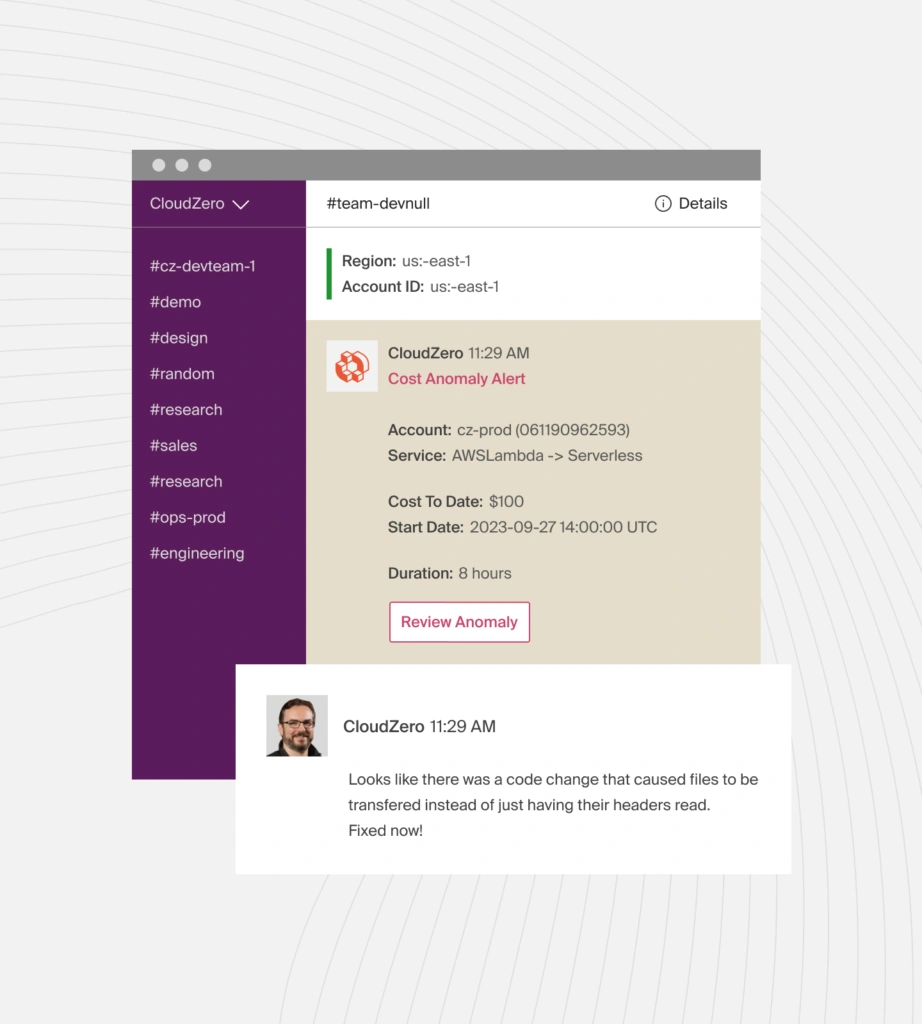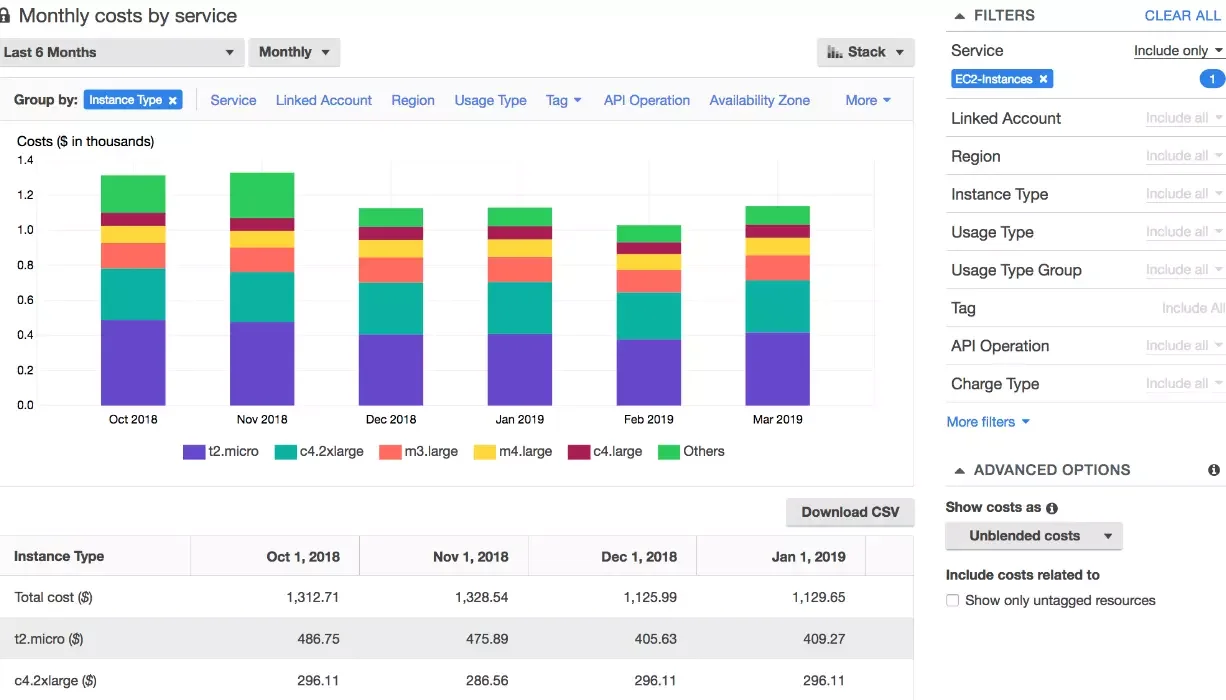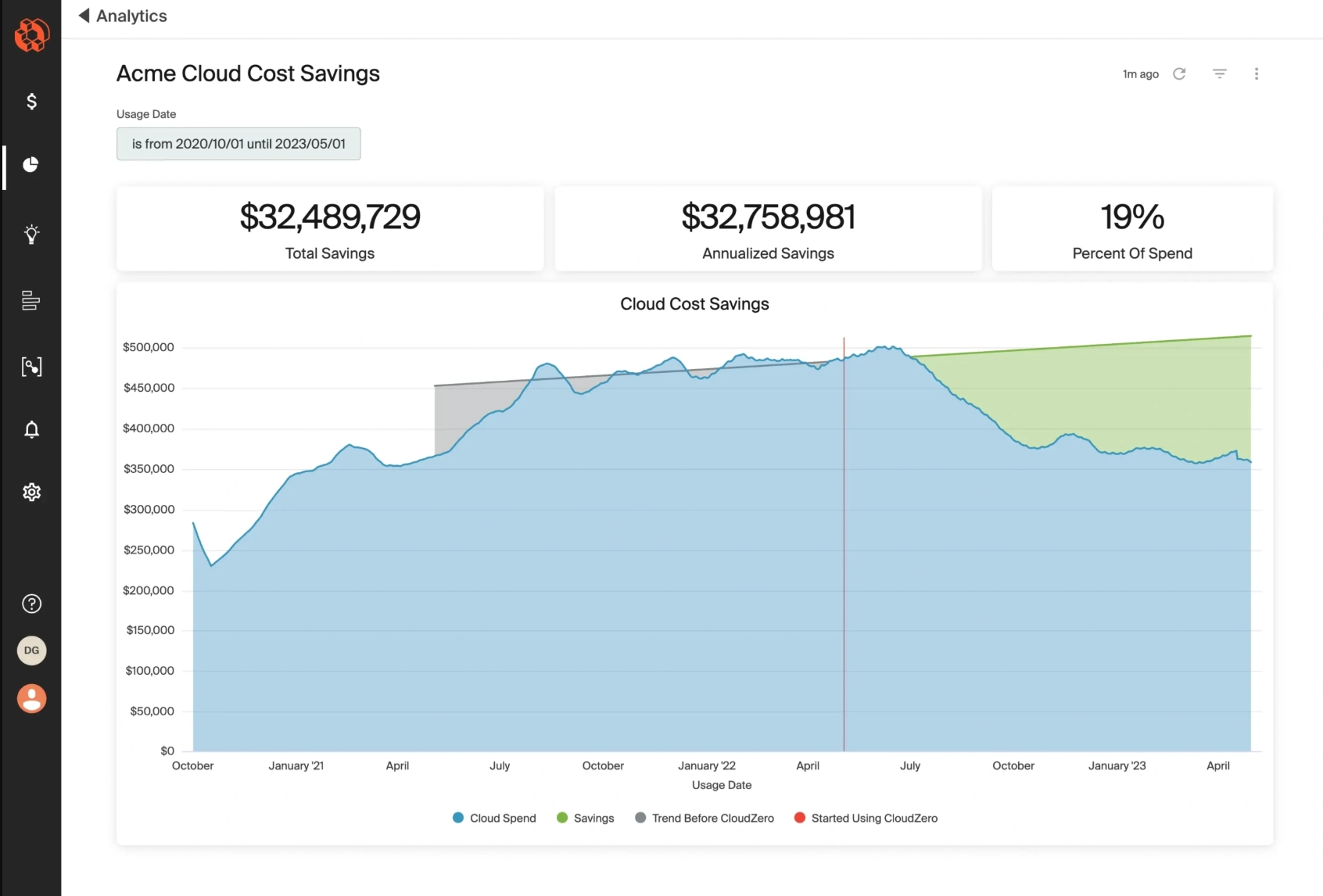Whether or not you take the oft-quoted statistic that 30% of companies’ cloud spend as gospel, one thing is for sure: Companies have been spending recklessly in the cloud ever since its inception.
For (fairly) good reason — companies wanted to perfect their products and snatch up market share before an even more reckless spender did.
But the chickens of overindulgence are finally coming home to roost. The more we work with customers, the more we see a common desire: cloud savings, lots of it, ASAP.
CloudZero is the only cost management platform to power engineering-led savings. We get your engineers real-time cost data down to the hour, relevant to their work, in a way that’s convenient to their workflows and empowers them to find nuanced savings opportunities.
As you ponder your own cloud savings projects, here are a few ways we’ve helped CloudZero customers cut back.
Story #1: Saving A Major FinTech Platform $1.4M A Year
Customer Industry: FinTech
Total Annualized Savings: $1,400,000
Total Engineering Time Invested: <2 hours
Methods:
- Shutting down AWS-managed Prometheus from leftover proof of concepts (POCs), surfaced by CloudZero Cost Anomaly Detection, revealing $492,000 per year in savings
- Shutting down old Lambda function that was being used to ETL CDN logs, revealing $288,000 per year in savings
- AWS Config optimizations — CloudZero Explorer revealed unusually high AWS Config costs, enabling the security team to spend an hour optimizing, finding $684,000 per year of savings
This is a powerful example of the results CloudZero gives customers in the initial stages of our engagement. CloudZero shows customers things they’ve never seen before — many of which are both very costly and very easy to address. Especially for large customers, the business impact is huge.

Story #2: Saving A Cybersecurity Company $312,000 A Year
Customer Industry: Cybersecurity
Total Annualized Savings: $312,000
Total Engineering Time Invested: 1 hour
Method: CloudZero noticed an $850 per day spike in one of this customer’s S3 buckets — from $550 per day to $1,400 per day. We notified the engineers responsible for the bucket. After investigation, the customer disabled the bucket’s inventory, which brought costs back down to $550 per day.

This is the kind of event that would be easy to miss. We caught the cost spike mid-month, and if we hadn’t, it would have shown up as an unaccounted-for $12,750 increase in their monthly AWS invoice.
Flagging the anomaly, tracing it to a specific AWS resource, and pinging the relevant engineers made it easy to identify and address the root cause of the spike.
Story #3: Saving A Payment Platform $370,000 A Year
Customer Industry: SaaS
Total Annualized Savings: $370,000 ($2,400 per day for 30 days; $900 per day for the rest of the year)
Total Engineering Time Invested: 2 hours
Method: During a routine check-in, we identified a $2,500 per day spike in the customer’s CloudTrail spend, from $1,000 per day to $3,500 per day. The customer assessed the issue, decided to turn off paid events, and saw their CloudTrail spend decrease — twice. First, it dropped back to ~$1,000 per day; then, after further optimizations, dropped to $100 per day.
This is a prime example of what happens when the right people have the right data at the right time.
Simple rearchitectures turned a $3,500 per day resource into a $100 per day resource — with no effects on platform availability. A simple, easy-to-miss, highly impactful business optimization.

Story #4: Saving Ourselves $25,000 A Year
Industry: SaaS
Total Savings: $25,000
Total Engineering Time Invested: <1 day
Method: A CloudZero engineer heard about a new Python library on a podcast. He proposed implementing the library, believing it would speed up (and reduce the cost of) our most cloud-expensive platform feature. We implemented it, and it had the desired effect, reducing the feature’s yearly cloud costs by $25,000.
We had to give ourselves a shoutout. What’s important about this example is that optimizations can come from anywhere — discussions between colleagues, podcasts, articles, or the platform itself.
When engineers get in the habit of thinking critically about costs, they start finding optimization opportunities everywhere. On its own, $25,000 per year doesn’t put a huge dent in our margins. But many small, effective changes, identified and implemented on a continuous basis, certainly do.
The Importance Of Engineering-Led Optimization
Each one of these savings stories centers on engineers.
Once engineers get relevant, timely cost data about their cloud infrastructure, they can make informed decisions about how to handle it.
Often, remediating a harmful spend event is as easy as turning something off — which is only possible if the relevant engineer knows exactly what’s causing the issue, exactly when it happens.









